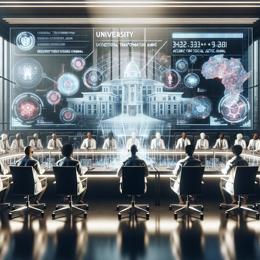Image created by AI
Eviction of Khoisan Community from Union Buildings Marks End of Long-standing Protest
In a significant yet controversial move, the Khoisan community, which had been occupying the Union Buildings' lawns in Pretoria for almost seven years, was forcefully evicted this Monday. This action by authorities, aligned with the Pretoria High Court's eviction order issued on December 11, marks the conclusion of a long-standing protest aimed at gaining formal recognition for the Khoisan as the first inhabitants of South Africa.
The eviction was conducted amidst the mourning period for Queen Khoisan SA, Cynthia Triegardt, who tragically died in a car accident early January. The removal of the community included dismantling the structures set up by King Khoisan SA and his followers. Notably, King Khoisan SA was recently discharged from the hospital and is currently recuperating in Gqeberha, hindered from returning to the site by the recent bereavement and enforced evacuation.
Lennox Mabaso, spokesperson for the Department of Public Works and Infrastructure, clarified that the decision to enforce the eviction was carried out in consultation with various stakeholders including other government bodies and the City of Tshwane. Mabaso empathized with the Khoisan community's grievances but stressed that public spaces such as the Union Buildings lawns are meant for the enjoyment and use of all South Africans. He further underscored the importance of adhering to the law and addressing issues through appropriate legislative channels.
This eviction raises several poignant issues, notably the challenge of balancing national heritage and public use spaces with the rights and recognitions of indigenous populations. The Khoisan have long sought to be acknowledged officially as the earliest inhabitants of the region, a claim complicated by legal and bureaucratic frameworks. Their protest at the Union Buildings was not just a physical occupation, but a stark reminder of the socio-political invisibility they have contended with.
As South Africa continues to grapple with the complexities of its diverse heritage, the eviction of the Khoisan community from a site as symbolic as the Union Buildings sends a resounding message about the current state of indigenous rights in the nation. It also opens up a broader dialogue about how South Africa, and indeed other nations, choose to acknowledge and integrate the histories and rights of their first nations people within the narrative of national identity and legal structure.










